Nature's Elusive Secrets
A&S physicists design technology used at international lab to discover new information about what the Universe is made of.
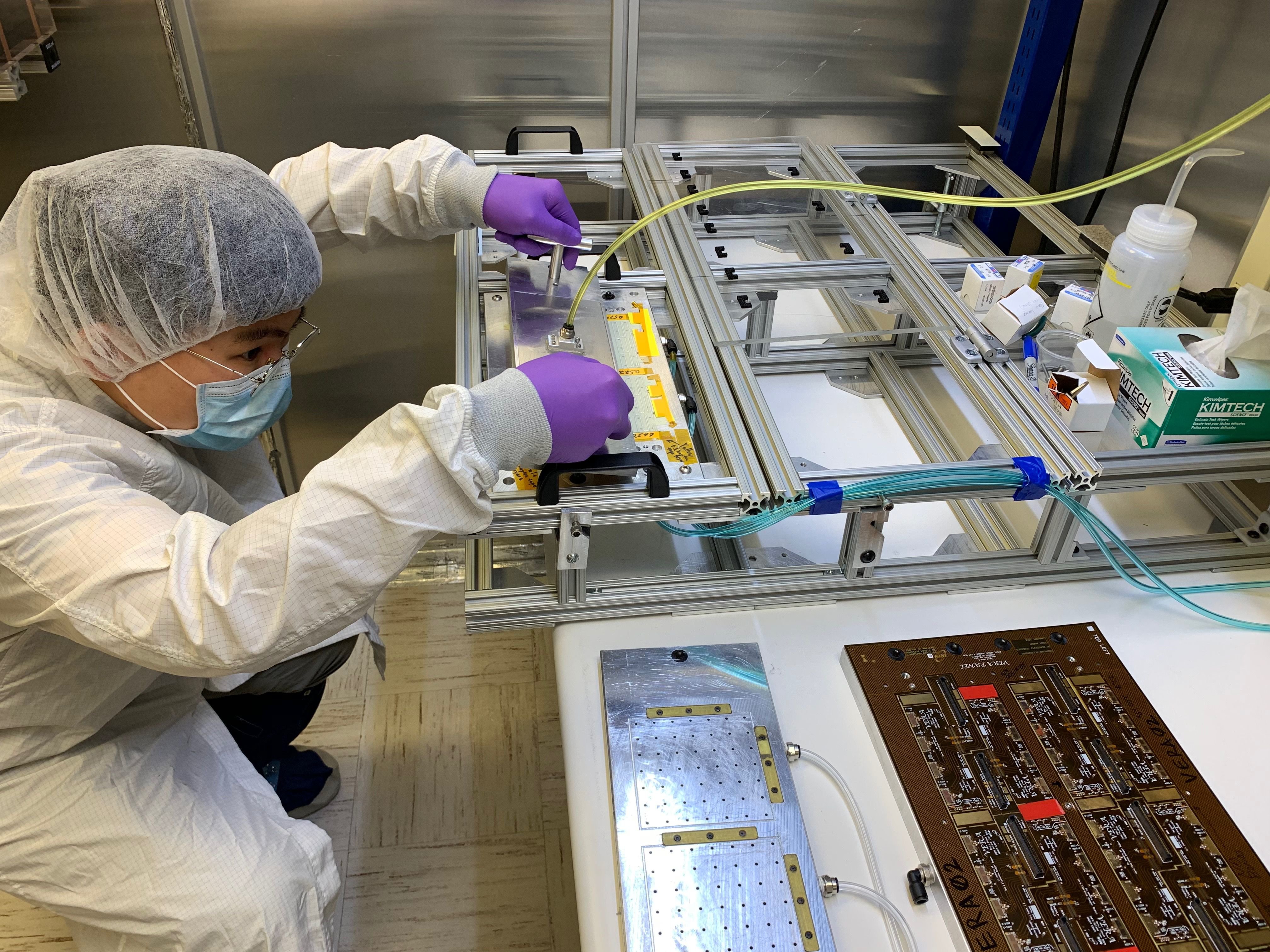
College of Arts and Sciences (A&S) physicists just launched a new tracking device to research the fundamental forces and particles in the universe. The device, known as the Upstream Tracker, was installed at the renowned CERN laboratory on the Swiss-French border just outside of Geneva, which uses some of the world's largest and most complex scientific instruments to study fundamental particles.
The Upstream Tracker is part of an ambitious upgrade to the “Large Hadron Collider beauty (LHCb)” experiment taking data at the Large Hadron Collider at CERN, which aims to uncover information about the universe through science known as new physics. New physics is knowledge that enhances the current understanding of how the universe works. The university’s High-Energy Physics group working at LHCb led an international team of collaborators that designed and constructed this detector.
The installation is the culmination of a decade of research and work, led by physics professor Marina Artuso. The project received nearly $7 million in awards from the National Science Foundation, with a majority of the funds going directly to Syracuse research.
The Upstream Tracker will help scientists search for knowledge beyond the “Standard Model” of physics, which is the current best theory about the building blocks of the universe. The Upstream Tracker is a crucial component of the LHCb tracking system, used to reconstruct the positions of the subatomic particles produced in the proton-proton collisions, and is part of a high-speed processor that implements sophisticated algorithms to make real-time decisions about what to record. It’s technology that will empower physicists to make key discoveries about fundamental particles.
While the Standard Model explains a great deal about the physical matter and forces in the universe, there are significant phenomena that it doesn’t explain, says Artuso, like the existence of dark matter and dark energy, which are invisible but account for about 95 percent of the universe, and the reason why the current universe is stable. The LHCb and Upstream Tracker were designed to help physicists solve these big mysteries through new physics.
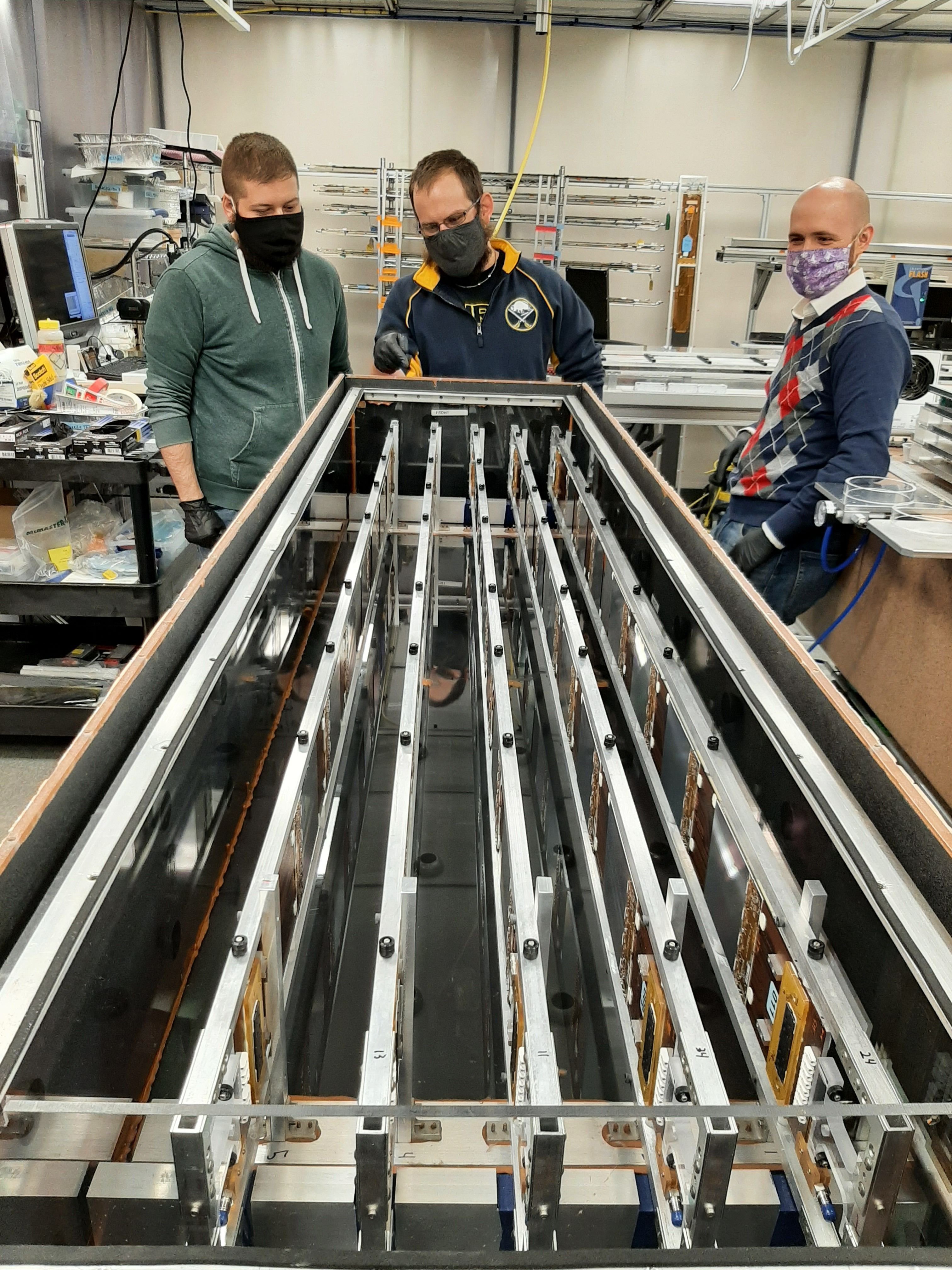
Nearly 50 undergraduate students and tens of graduate students contributed to this project over the years and several Syracuse faculty members played key roles, including the late Sheldon Stone, who served as project deputy, along with physics professor Steven Blusk, who led test beam studies of detector prototypes, associate physics professor Matt Rudolph, who led the sensor acquisition, physics professor Tomasz Skwarnicki, who is leading the software effort to process the detector information. Physics research assistant professor Ray Mountain was a key player in the detector mechanics and oversaw the production of the detector units in the clean rooms built for this project.
Artuso and a pair of alumni shared their experience on this project and offered insights about what they hope this device will contribute to human knowledge.
Marina Artuso, physics professor, Upstream Tracker (UT) project lead
Can you explain what the Upstream Tracker project aims to do?
One of the main tenets of my physics work is to solve mysteries about how the universe works through new physics. But, new physics can be very subtle, elusive, and difficult to detect. Nature wants us to work a little harder to find these secrets. The Upstream Tracker is a key component of the upgraded LHCb detector that is poised to observe rare processes between particles that occur below the current sensitivity level.
To use a simple analogy, it’s like how Galileo needed to design a telescope to look at the stars. Without that technology, some of his discoveries wouldn’t have been possible. The Upstream Tracker is a needed component to make LHCb able to observe exotic decays of some intriguing quarks [subatomic particles] named “charm” and “beauty” so we can understand more about the matter and forces of the universe.
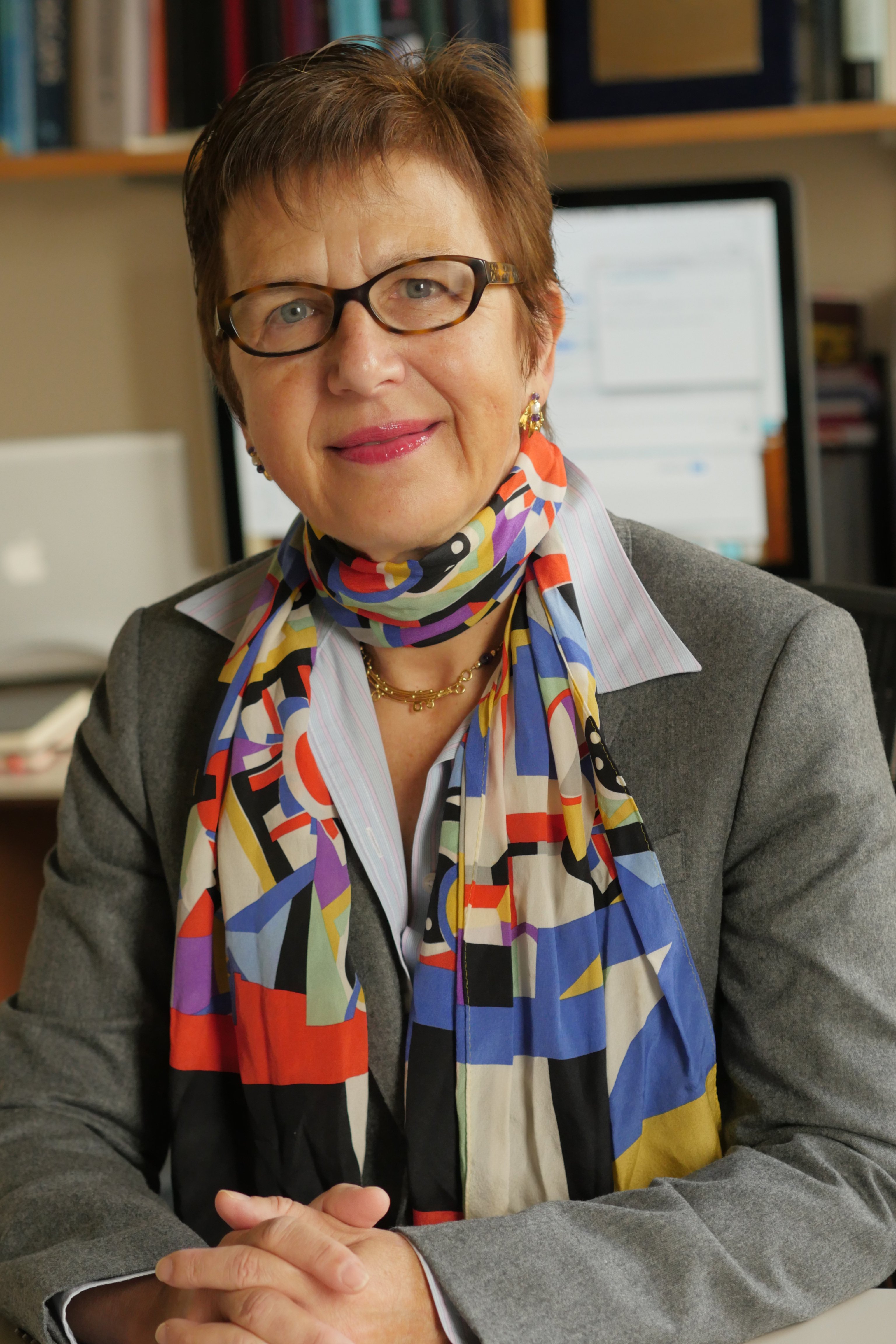
What do you hope to contribute to the field through the pursuit of new physics?
There are strange patterns in the universe that we don’t understand. Like, we don’t know why the universe is stable. It's very convenient for us that it is, but it was not a given that it would be stable. And there are unanswered questions about other components of the universe, like the differences between matter and antimatter. For every particle in the universe, there is a corresponding antiparticle, identical to the particle, but with an opposite charge. When matter and antimatter come into contact, they annihilate one another in a flash of energy. We should see an equal amount of matter and antimatter in the universe but that’s not the case. Everything we see around us, like computers, trees, and homes is composed entirely of matter and we see almost no signs of antimatter.
We are trying to understand this phenomenon by learning more about fundamental particles known as beauty and charm quarks, which play a vital role in the connections and differences between matter and antimatter. The hope is that we will find new physics to better explain the history of the universe. The Upstream Tracker is a pillar in the LHCb experiment and this exciting physics program.
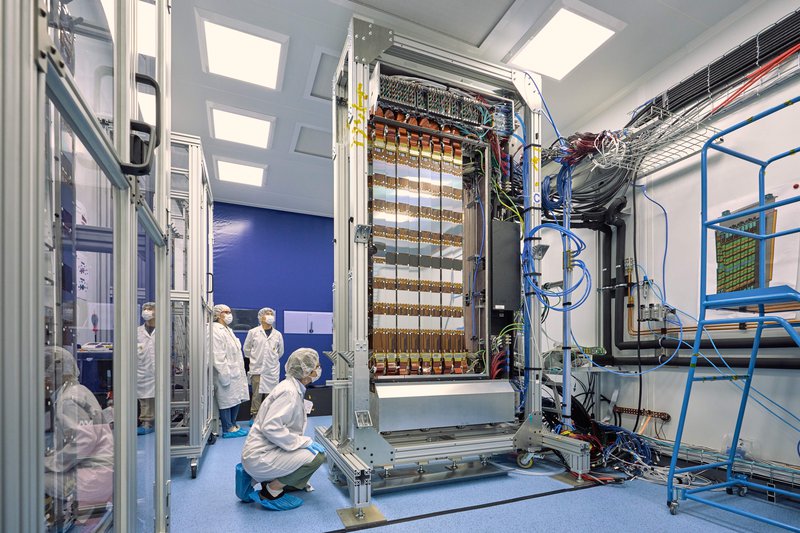
Physics Professor Marina Artuso inspects the first half of the detector assembled and ready to be deployed in LHCb. (Courtesy: CERN)
What drew you to the field of particle physics?
I was actually originally in electrical engineering and I was working on the technology behind these advanced detectors, but in this work, you have to understand the physics goal that the instruments are trying to achieve. And after hanging around with the physicists, I decided that I wanted to contribute to the physics side of these instruments.
Now, bringing an electrical engineering background into my physics work has broadened my understanding of how to integrate the physics and the technology. It really worked out for me to build expertise on both sides of the experimental work.
What have you been most proud of in this work?
The Upstream Tracker design is based on small silicon sensors mounted on a lightweight carbon fiber support structure, called a stave. The sensors can track precise locations of the subatomic particles that traverse its planes. Every step of this design needed to be carefully planned and executed, from preparing modules for assembly to testing iterations of the electronics. It involved precise and specialized technologies, involving advanced mechanics, semiconductor technology and microelectronics. Its construction is the result of a decade of work and a lot of incredible teamwork. It felt a bit like building a cathedral, where we created something that will transcend us. Even designing a shipping system to transport this device to Geneva was an intricate operation.
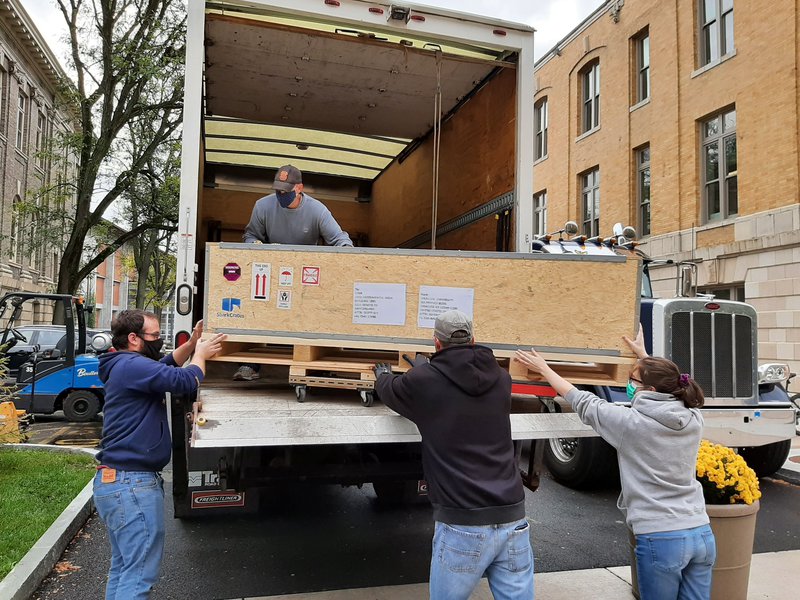
The shipping crew loads another shipment on the truck at Syracuse University. This is the first step in its journey from Central New York to Geneva, Switzerland.
What are your goals for the future of this project?
There are two things that I’m thinking about for our future work. First, we spent a decade on this project and I want to explore the physics that will come out of this work and commitment. And secondly, we’re already thinking about how to innovate and upgrade this technology. This summer, we’re launching another R&D project to explore new technologies towards an even better LHCb. And I’m pursuing opportunities for interdisciplinary research and collaboration to build the next generation of this detector. One of my biggest goals is to position Syracuse University as one of the leading institutions in the United States for advanced instrumentation and I have many exciting ideas about how to continue doing that.
Danielle Germann ’21, B.S. in physics, currently a physics Ph.D. student at Brown University
Can you share more about your involvement with this project?
Following graduation, I began working with the Experimental Particle Physics group at SU on the LHCb Upstream Tracker upgrade at CERN. I helped test electrical modules and staves and assisted with module assembly, stave construction, and stave transport to CERN. In Fall '21, I was fortunate to be given the opportunity by Professor Artuso and Professor Stone to conduct postbaccalaureate research at the LHCb site in Geneva, Switzerland. At CERN, I performed hardware tests for next-generation UT electronics, installed and ensured connectivity of peripheral electronic components, and mounted staves into the UT.
How did this experience prepare you for or contribute to your career?
This experience equipped me with new approaches to physics, mechanics and electronics, as well as collaboration with a team of diverse contributors toward a major experiment intended to push beyond the Standard Model. This knowledge helped prepare me for graduate level research and allowed me the opportunity to connect with scientists all over the world whom I learned significantly from during my time abroad. My time at CERN was one of the most influential periods of my life, and I am forever grateful to Professors Stone and Artuso for giving me such an incredible opportunity.

Scott Ely ’22 Ph.D., physics, currently a research associate in high energy physics at Imperial College, London
How were you involved with this project?
Over the course of my time at Syracuse, I was involved in nearly every part of the Upstream Tracker. I joined the project in 2013 when I started my Ph.D. My early work focused on the components that detect a particle passing through the detector. In 2016, I moved to CERN and contributed to many test-beam experiments. After returning to Syracuse, from 2017 until early 2020, I contributed to the construction of the main structural components of the Upstream Tracker.
In February 2020, I moved to CERN to help with the construction of the Upstream Tracker and its integration with the LHCb experiment. I was responsible for overseeing the construction at the LHCb experimental site. The first stave was installed in the Upstream Tracker two years later. This was a huge milestone for the project, and being a part of this success was a great highlight in my personal career.
I completed my Ph.D. and left Syracuse at the end of June 2022, after accepting a position as a post-doctoral researcher at Imperial College, London, and I am still working with the LHCb experiment.
How did this experience prepare you for or contribute to your career?
My work with the Upstream Tracker gave me the skills needed to excel as a researcher. I am becoming a hardware focused physicist, interested in the development of new technologies in particle physics research. Working on the Upstream Tracker gave me insight into every aspect of the project, and gave me the opportunity to lead a large team to help advance the project. It gave me real, first-hand experience for what it takes to bring a detector project from its infancy all the way to integration. I am grateful for my time with the project, and the expertise I gained from the project has set me up for a great career a physicist.
